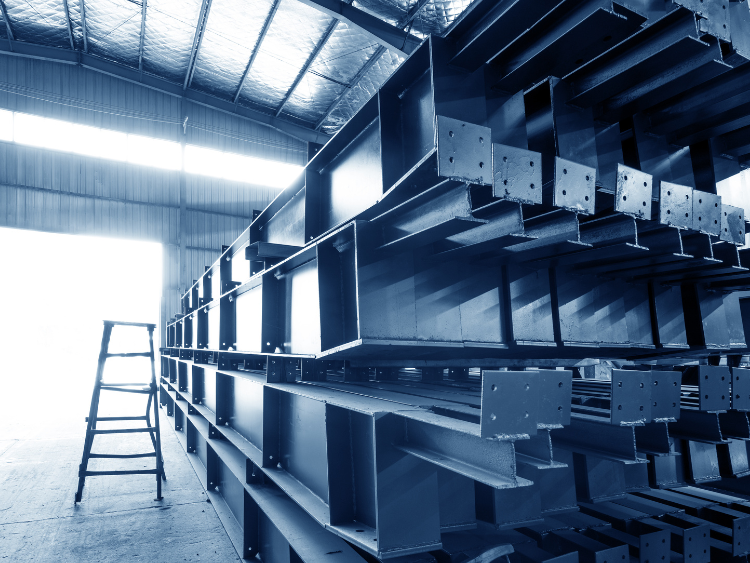European steel demand was expected to have declined in 2022 and to continue on that trend in 2023 because of weak performances by key steel-using sectors, but to recover in 2024, regional steel association Eurofer said in its fourth-quarter 2022 outlook report published on Thursday February 2.
Russia’s war on Ukraine and the consequent disruptions to global supply chains, and high levels of volatility in the energy market, were expected to take a toll on the steel sector in the region at least until the end of the first half of 2023.
Eurofer expected apparent steel demand in the EU to have declined by 4.6% in 2022 and to go down by 1.9% in 2023, which would mean two consecutive recessions in the steel market in the past five years.
In 2024, the apparent steel demand in the bloc was expected to recover modestly, by 1.6%.
But the evolution of the European steel market will remain subject to a high degree of uncertainty, which was likely to continue to undermine demand from steel-using sectors.
EU steel market overview
The year 2023 started on a positive note for the European flat steel market, with prices rebounding in January from the low levels seen in December 2022.
European mills managed to achieve higher prices in sales thanks to a more balanced market that was itself a result of output cuts and restocking activity.
Notably, Fastmarkets calculated its daily steel hot-rolled coil index, domestic, exw Northern Europe, at €752.50 ($820.53) per tonne on Thursday, up by €0.62 per tonne from €751.88 per tonne on February 1.
The latest calculation of the index was up by €5.00 per tonne week on week, and up by €83.75 per tonne month on month.
But the recovery was still fragile, according to market sources, because steel demand from end-user sectors remained slow.
Eurofer said that automotive sector output was expected to have recovered by 2.7% in 2022, but that this would mostly be a rebound from the low comparison base in 2021 due to a components shortage that year.
The sector was expected to return to growth in 2023, albeit very moderately (+1.1%), according to Eurofer.
Demand for steel coil products from the automotive industry has slightly picked up early in 2023, mainly due to a backlog of automotive orders, several sources said.
“I would say that prospects for the first half of 2023 are not bad, but for the second half of 2023 there might be a gap in consumption,” a mill source said.
“It is extremely hard to pass higher steel prices downstream. There is a lack of buyer confidence,” a steel service center said.
Meanwhile, the construction industry, which was usually more resilient to economic shocks, was expected to have rebounded by 4.4% in 2022, but to decline by 1.6% in 2023.
The overall economic slowdown due to the war in Ukraine was also expected to weigh on the construction sector, with drops between the fourth quarter of 2022 and the second quarter of 2023.
Slow demand from construction, a key consumer sector, as well as the uncertainty among buyers, resulted in minimal activity in the European steel rebar market in January 2023.
Fastmarkets’ weekly price assessment for steel reinforcing bar (rebar), domestic, delivered Northern Europe, was €700-740 per tonne on February 1, down by €40-55 per tonne from €755-780 per tonne last week.
Imports
Over the first 11 months of 2022, carbon steel imports into the EU amounted to 25.9 million tonnes, down from 27.8 million tonnes in the corresponding period of 2021.
Russia’s war in Ukraine had reshuffled traditional trade flows, with countries in Southeast Asia increasing their presence in the EU market.
For example, with traditional volumes of HRC from Ukraine and Russia missing from the market, European buyers started to import more coil from Japan, South Korea, Taiwan and India, Eurofer statistics showed.
Notably, HRC imports from Japan to the EU amounted to 944,230 tonnes in January-November 2022, compared with 591,355 tonnes during the entire year of 2021.
HRC deliveries from South Korea to the EU also increased, amounting to 713,186 tonnes in January-November, versus 463,777 tonnes in the whole year of 2021.
Market sources did not expect overall steel imports to increase in 2023, given weak European steel market fundamentals and the long lead times offered by overseas suppliers.
“When the market is so volatile,” an HRC buyer in Germany said, “taking a risk and booking coil for May delivery now [in January] is like gambling, because of all the related risks [such as] safeguard measures, the risk of price collapse, fragile demand, etc.”
Published by: Julia Bolotova






